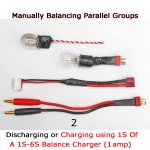大家好,我不是做广告,也不是解释什么,我只是知道你们对UPP的看法,我是UPP内部的一名电动自行车工程师,我不是来自UPP电池部门,但公司似乎正在这样做,我表示惊喜,因为我们的产品一向性价比高。也许有人会说,我们的电池质量有很大问题。在电池行业,我们都面临着同样的问题。我们想要好的质量和好的保护,所以成本需要提高。发货前,我们会进行2至5次设备老化测试后再发货。如有问题,我们将在车间内进行调查并完成。当然,任何产品都会发生事故和事故。目前,我们的老板在英国,在与英国政府沟通并解释了这起事件后,我们内部认为这是竞争对手联手客户打压UPP。对此,我也希望在本次论坛中得到用户对产品优化的建议,我会反馈给总部。将会进行修改,感谢您的支持!
德科

[Moderator edit: google translation from original Chinese below]
Hello everyone, I am not advertising or explaining anything, I just know what you think about UPP, I am an e-bike engineer within UPP, I am not from the UPP battery department, but the company seems to be doing this, I express surprise , because our products have always been cost-effective. Some people may say that there is a big problem with the quality of our batteries. In the battery industry, we all face the same problem. We want good quality and good protection, so the cost needs to go up. Before shipping, we will conduct 2 to 5 equipment aging tests before shipping. If there is a problem, we will investigate and complete it in the workshop. Of course, accidents and mishaps happen with any product. Currently, our boss is in the UK. After communicating with the British government and explaining this incident, we internally believe that this is a competitor teaming up with customers to suppress UPP. In this regard, I also hope to get users' suggestions on product optimization in this forum, and I will give feedback to the headquarters. Modifications will be made, thank you for your support!
Deco
德科

[Moderator edit: google translation from original Chinese below]
Hello everyone, I am not advertising or explaining anything, I just know what you think about UPP, I am an e-bike engineer within UPP, I am not from the UPP battery department, but the company seems to be doing this, I express surprise , because our products have always been cost-effective. Some people may say that there is a big problem with the quality of our batteries. In the battery industry, we all face the same problem. We want good quality and good protection, so the cost needs to go up. Before shipping, we will conduct 2 to 5 equipment aging tests before shipping. If there is a problem, we will investigate and complete it in the workshop. Of course, accidents and mishaps happen with any product. Currently, our boss is in the UK. After communicating with the British government and explaining this incident, we internally believe that this is a competitor teaming up with customers to suppress UPP. In this regard, I also hope to get users' suggestions on product optimization in this forum, and I will give feedback to the headquarters. Modifications will be made, thank you for your support!
Deco
Last edited by a moderator:


